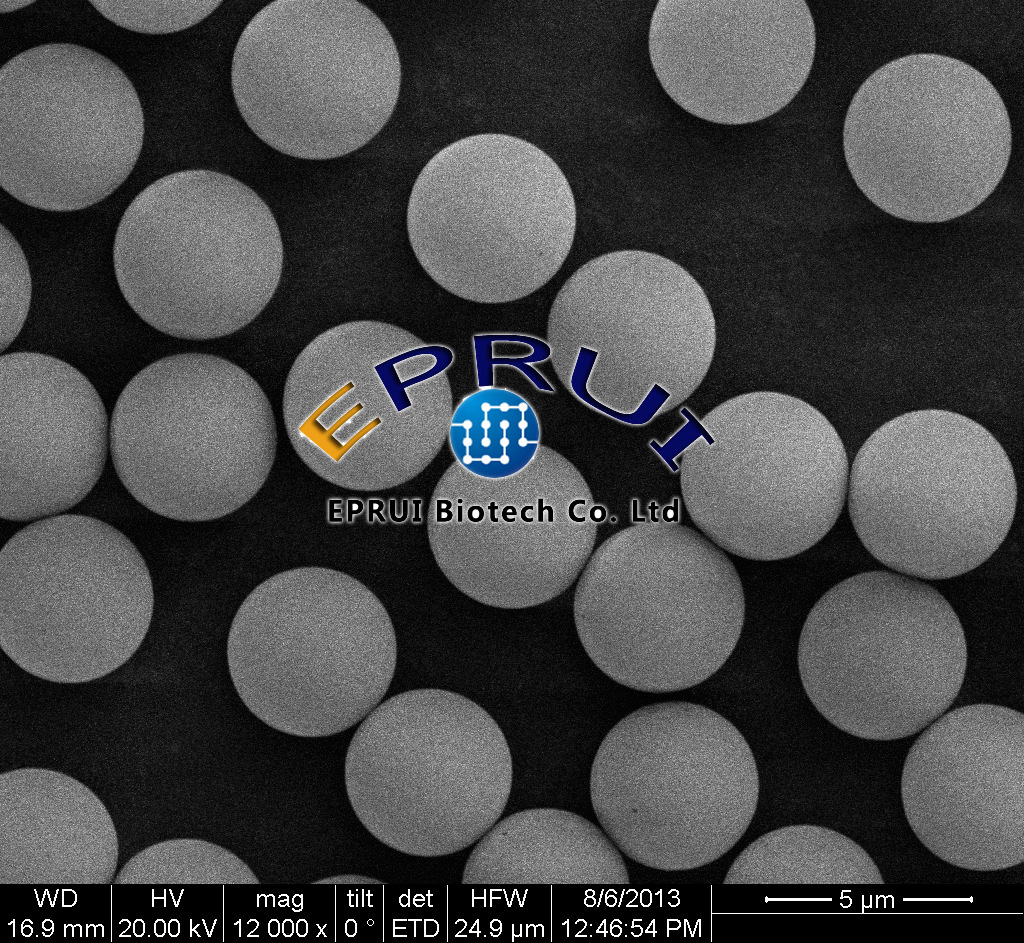Project Description
Plastic spacers are made of highly crosslinked monodisperse polymer microspheres, which have very narrow particle size distribution.
EPRUI supplies plastic spacers for LCD, PDLC display which can precisely control the panel thickness without damage on the base plate and make the liquid screen far greater clarity.
Applications
Carbohydrate HPLC analysis chromatography media is mainly used for the analysis and separation of carbohydrates including fruit juice containing organic acid, sugar alcohol, simple sugar, polysaccharide and so on.
Features
- Uniform sphere and smooth surface
- Accurate particle size control
- Narrow particle size distribution
- Excellent resistance against heat, cold and chemicals
- Easy to disperse and no aggregation
- Excellent mechanical strength and superior crush resistance
- Free from contaminations
Products
EPRUI provides three types (H, X and A) of high quality plastic spacers. Among the three series, A type has the highest recovery rate and molulus of elasticity, X type is next and H type is the last.
| Type | Product | CV | Diameter(um) | Application |
|---|---|---|---|---|
| H | EPRUI-SP-HT | <3.5% | 2.0-100um | TN,HTN |
| EPRUI-SP-HS | <3% | 2.0-7.0um | HTN,STN,FSTN | |
| X | EPRUI-SP-XT | <3.5% | 2.0-100um | TN,HTN |
| EPRUI-SP-XS | <3% | 2.0-7.0um | HTN,STN,FSTN | |
| A | EPRUI-SP-AS | <3% | 2.0-7.0um | HTN,STN,FSTN |
| EPRUI-SP-ASE | <3% | 2.0-7.0um | HTN,STN,FSTN |
Mechanical Data
| Item | Typical Result | Test Method |
|---|---|---|
| Mean Diameter, um | ±0.05um | Coulter Counter Multisizer |
| CV | 1.0%-3.5% | Coulter Counter Multisizer |
| Thermal Deposition Temperature | 340℃ | TGA |
| Volatile Components | <1% | 105℃ 1h |
| Transmittance | 90% | 1mm Plate |
| Haze | 2.00% | 1mm Plate |
| Volume Reisistance,1015 ohm cm | 3.3 | JIS K6911 |
| Dielectric Constant at 1kHz | 2.8 | JIS K6911 |
| Specification | H type | X type | A Type | Test Method |
|---|---|---|---|---|
| Density g/cm3 | 1.08 | 1.09 | 1.09 | Multi Volume Density Test |
| Refractive Index | 1.57 | 1.58 | 1.58 | Na-D-ray |
| 10% Molulus of Elasticity kgf/mm2 | 300-600 | 400-650 | 450-700 | Shimadzu MCT210 |
| Chemical Reisistance | Weight change after immersion for 10 days at 20 ℃ | |||
| Water | 0.50% | 0.40% | 0.40% | |
| 0.1N NaOH | 0.10% | 0.10% | 0.10% | |
| 0.1N HCl | 0.20% | 0.30% | 0.30% | |
| Acetone | 0.80% | 1.00% | 1.00% |
Recommended Spraying Methods
Dry Spray: For best results, it is recommended to vacuum dry our plastic spacers at 80 °C for 8 hrs (caps off) before dry spraying, which ensures the spacers disperse smoothly and freely.
Wet Spray: Disperse our plastic spacer in organic solvent such as isopropanol or ethanol, ultrasonicate for a while before adding proper amount of water, which usually works better than dispersing the beads directly in aqueous solution containing of organic solvent.
Recommended Spraying Density
| Plastic Spacers | TN | STN |
|---|---|---|
| Spraying Density | 400-100 particles mm2 | 80-200 particles mm2 |
Packing and Storage
- 10g or 20g glass vials with plastic caps and inserts to keep moisture away from the contents. PET vials of 10 g or 20 g are also available upon request.
- The label on the vial includes product name, lot number, expiration date, weight, RoHS, inspection passing stamp, etc.
- The vials should be stored in dehumidifying cabinets with controlled temperature and humidity. The cabinet should be set at room temperature and kept under25% humidity. It is recommended to use up the entire product in a vial once it is opened.

